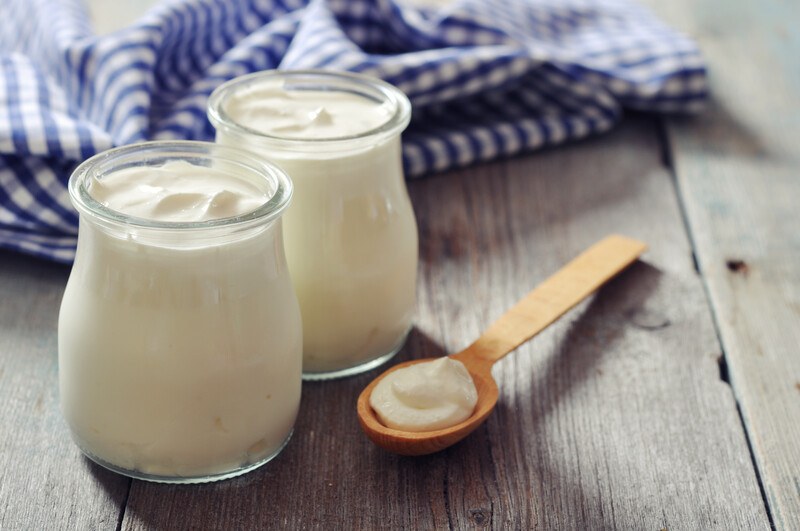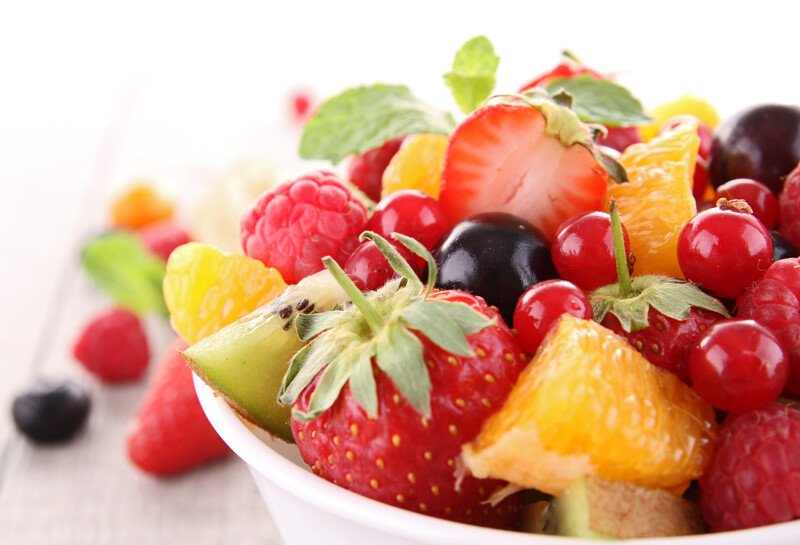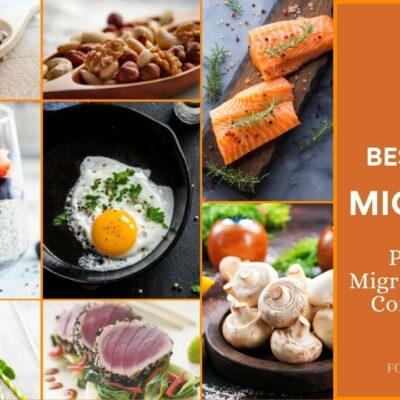
A low-fat diet that focuses of course on low fat foods is beneficial for people who are aiming to lose weight or maintain a healthy weight. Eventually, a healthy weight will help reduce any risk of heart disease, stroke, diabetes, and certain types of cancer. When done right, focusing on low fat foods is a win-win for your body health-wise, and for your weight goal as well. A low-fat diet help reduce your caloric intake which also improves your cholesterol levels.
Healthy fats are actually necessary and beneficial for health. So, the main goal is staying away from the bad fats or the trans fats and getting more of the good stuff. You see there are three types of fats – the good or unsaturated fats, the bad or trans fats, and the saturated fats.
Unsaturated or monounsaturated and polyunsaturated fats are the ones that lower the risk of diseases. These can be found in vegetable oils, seeds, nuts, and fish. Trans fat on the other hand is the one causing or increasing the risk of diseases. They’re present in processed foods with partially hydrogenated oil and naturally found in small amounts in dairy and beef fats. Trans fat raises the LDL and lowers HDL (two types of cholesterol), create inflammation, and adds to insulin resistance.
Now, although saturated fats are not as bad as trans fats and the fact that in recent years the idea that diets high in saturated fat are no longer linked to increased risk of heart disease (studies have been made about that) – it’s still best to take them in moderation. It’s mainly found in animal foods but can be present as well in other plant food like coconut and palm oil. The biggest sources of saturated fats are whole milk, meat products, fast food dishes, cheese, cookies, and other grain-based desserts.
The way we eat greatly affects the health of our bodies. As evident with so many diets (including the fad ones), it only shows that people are in active pursuit of a healthier way of eating. And since it heavily relies on our personal needs, objectives, and health conditions – choosing the right diet plan that will actually work is very subjective.
It’s always best to consult your doctor or dietician before starting on any kind of diet. However, if you’re just looking to make little adjustments here and there, then restricting on certain foods you deemed unhealthy will be just fine. For instance, if you realized that focusing on low fat foods does leave you feeling good and healthier then you can perhaps start considering a full low-fat diet and ask your doctor about it.
Here are just 15 types of low fat foods that you can start adding to your daily meal plans. See if they’ll work for you and feel any positive changes. See also some kitchen tips at the end of the article on how you can keep a low-fat eating habit.
Types of Low Fat Foods
White fish

White fish like cod, flounder, halibut, tilapia, sole, and pollock are very lean and excellent sources of protein. Per serving of about 100 grams contains less than 3 grams of fat.
These white fish contain little fat with only a few calories but are loaded with protein that will surely satisfy hunger. This makes them one of the most diet-friendly foods.
Shellfish

Shellfish which include shrimp, crab, crayfish, lobster, clams, and scallops are very low in fat. In fact, A 3-ounce servings of the shellfish mentioned contains less than a gram of fat.
Shellfish are rich in iron, zinc, magnesium, and vitamin B12. They’re also rich in protein and omega 3 fatty acids.
Chicken or turkey breast

Chicken and turkey breast when skinless and un-breaded are not just low in fat but are also carb-free. A serving size equal to 3-ounces contains less than a gram of fats.
They’re both rich in niacin and vitamin B6. They also contain essential amino acids like tryptophan which is beneficial for healthy sleep and a stable mood.
Egg whites

Egg as a whole can prove to be quite controversial because of its fat and cholesterol contents. But fortunately, all of those fats are found in the egg yolk. So, egg whites are in the clear. However, there are beneficial nutrients that you might be missing because you’re ditching the yolk. See here for more info about that along with some egg recipes.
Egg whites contain protein, vitamin B2, vitamin B5, and selenium. It also contains fewer calories than a whole egg.
Skim milk

Skim milk, also known as non-fat or fat-free milk contains zero fat. This processed milk may have a slightly different milk taste as a result of fats being stripped off it. You may also opt for reduced-fat milk which means it has undergone processing as well but 2% of the fat is retained.
It should be noted though that although skim milk and reduced-fat milk have less saturated fat than whole milk, it contains added sugar. The additional vitamins that it contains are also likely due to fortification.
Cottage cheese

The fat content of cottage cheese will depend on the level of milk fat used. For instance, a cup of low-fat cottage cheese (used 1% milkfat) contains 2.3 grams of fat.
Cottage cheese is a great source of protein and is also packed with B vitamins, calcium, phosphorus, and selenium.
Low-fat yogurt

Just like cottage cheese, yogurt’s fat content depends on the type of milk used to make it. The fat content can range from 0.4% (non-fat yogurt) to 3.3% (full-fat yogurt). So, always go with the non-fat or low-fat option whenever you can.
Yogurts are rich in protein, calcium, and vitamins. In fact, a cup of low-fat yogurt has higher protein and calcium contents than light ice cream. It also has probiotics that are good for your gut.
Cruciferous vegetables

Cruciferous vegetables like broccoli, cabbage, turnips, radish, and cauliflower contain plant-based compound phytonutrients, particularly glucosinolates, which may have anti-cancer properties.
Cruciferous vegetables also contain carotenoids, folate, and vitamins K, A, and C. They’re also rich in fiber but low in calories, that’s why these veggies keep you feeling full for longer periods of time.
Leafy greens

Leafy greens like kale, arugula, collard greens, Swiss chard, Romaine lettuce, and spinach contain virtually no fats. They’re actually rich in plant compounds that help reduce inflammation in our bodies.
These leafy greens contain essential vitamins, minerals, and antioxidants that can prevent heart disease, diabetes, and even cancer.
Fruits

Fruits are excellent choices for low-fat snacks! They are low in fat but high in fiber. Fiber is basically good for regular bowel movements unless of course, you’re on a low-residue diet. If that’s the case then be cautious with your fruit intake.
Fruits are packed with vitamins, minerals, and beneficial plant compounds that are known for being potent antioxidants.
Legumes

Legumes or pulses include beans, lentils, and peas. They’re also low in fat but high in fiber and protein. Legumes have no cholesterol either. They are actually considered one of the most versatile and nutritious foods.
Legumes are also rich in folate, magnesium, iron, potassium, and zinc. It contains antioxidants that can help in preventing cell damage, fighting diseases, and aging.
Ancient grains

Ancient grains are actually a group of grains that as the name suggests, remained mostly unchanged for thousands of years. It includes barley, millet, bulgur, rye, fonio, Khorasan, teff, and farro.
Because they are less processed, they are packed with more fiber, vitamins, and minerals. That is on top of the fact that these ancient grains are low in fat.
Tea

Tea, particularly green, black, and white tea are all derived from the Camellia sinensis plant which is a shrub native to India and China. These teas contain antioxidants called flavonoids which help against free radicals.
These teas also contain caffeine and theanine that affect the brain and may help with heightened mental alertness.
Coffee

Coffee when taken in moderation not only contains some vitamins and minerals but is also high in antioxidants. Its main active compound, caffeine, helps boost energy levels, brain function, exercise performance, and metabolic rate.
Coffee contains riboflavin, pantothenic acid, potassium, manganese, magnesium, and niacin. It seems like coffee isn’t as bad as we previously thought it is, in fact, this seems to prove further that coffee is good for you.
Freshly squeezed fruit juices

Fruit juices not only has zero fats but it is also packed with vitamins, minerals, and beneficial compounds. It is also high in fiber and antioxidants. It does contain natural sugars so you may want to watch out for the sugar content if you have diabetes or are at risk because it can cause sugar spikes.
Fruits are a healthy part of our diet and choosing fruit juices over unhealthy drinks like soda is definitely a smart move. It’s also a great, delicious, and fun way to rehydrate.
Kitchen Tips for a Low-Fat Eating Habit
Take note of the 3 Bs
As often as possible, choose to bake, boil, or broil – these are healthier ways of cooking your food especially compared to frying. When baking, boiling, or broiling, you use very minimally to zero oil when cooking. This cooking method will also ensure that no fat-rich ingredients are added in the process, say heavy cream in stew dishes for instance. Let’s just count boiling here as steaming (anyway, it’ll require boiling water to steam), since steaming will preserve more of the food’s nutrients compare to literally boiling your food. If you really must boil, it still counts as healthier than frying, and to save more of your foods’ nutrients, don’t boil them (especially veggies) to a mush!
Use more spices and herbs
When adding flavor to your food, opt for more spices and herbs over oil-based marinades. Once you get to know your spices, you’ll be surprised at how much flavor they can add to your food. If you really need oil in your marinade, choose the healthier options like olive oil for example. If you can nail down the seasoning in your food using spices and herbs, then you’ll less likely to use condiments – especially when for some reason, we’re too quick to reach out for the unhealthy ones.
Fried food should be occasional
Yes, we know, there is really something about fried foods! So, let’s get real here. If it’s really impossible to take out fried foods in your diet then just do it occasionally. Treat it as a ‘treat’ – something that you should only have only once in a while. Be patient with it, you’ll really need a lot of it plus dedication to change your eating habits. Once you get used to it (it might take a while), you’ll notice that you’re no longer tempted with fried foods. When that happens, well then, congratulations!
Keep an eye on those fats
When prepping food, trim visible fats off meats including skin for chicken. While cooking, drain and discard the oil that drains from your meat. When you’re done, make use of paper towels to absorb any excess oil from your food – let them sit on paper towels for a few minutes. To skim fat from broth or stews, you can simply chill them – the fat will solidify and you can simply scoop it out. If you don’t have the time to chill them, you can also use paper towels or a piece of bread to skim the fat. Just lightly run the paper towel or bread over the broth or stew and the fat will instantly cling onto it.
Do some spring cleaning
You are more likely to stick to any diet if the culprits are not lurking around your kitchen. So do some spring cleaning. It’s time to rid your pantry and fridge of the unhealthy and even the not-so-healthy stuff. It’ll probably take some serious work to accomplish this especially when you’re not exactly the eat-clean type of person. But if you really want to change your eating lifestyle and eat healthier, then it really is a must. Remember out of sight, out of mind.

















 Is Yoga Good For You?
Is Yoga Good For You?
Leave a Reply